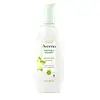What's inside
What's inside
 Key Ingredients
Key Ingredients

 Benefits
Benefits

 Concerns
Concerns

 Ingredients Side-by-side
Ingredients Side-by-side

Water
Skin ConditioningPotassium Cocoyl Glycinate
Glycerin
HumectantAcrylates Copolymer
Propanediol
SolventKaolin
AbrasiveCoco-Glucoside
CleansingCocamidopropyl Betaine
CleansingDisodium Cocoamphodiacetate
CleansingSodium Chloride
MaskingSodium Methyl Cocoyl Taurate
Cleansing1,2-Hexanediol
Skin ConditioningCI 77891
Cosmetic ColorantParfum
MaskingPotassium Hydroxide
BufferingPolyquaternium-7
Sodium Benzoate
MaskingDisodium EDTA
Ethylhexylglycerin
Skin ConditioningTetrasodium EDTA
Panthenol
Skin ConditioningNiacinamide
Smoothing3-O-Ethyl Ascorbic Acid
Skin ConditioningCitrus Reticulata Peel Extract
Skin ConditioningTocopherol
AntioxidantWater, Potassium Cocoyl Glycinate, Glycerin, Acrylates Copolymer, Propanediol, Kaolin, Coco-Glucoside, Cocamidopropyl Betaine, Disodium Cocoamphodiacetate, Sodium Chloride, Sodium Methyl Cocoyl Taurate, 1,2-Hexanediol, CI 77891, Parfum, Potassium Hydroxide, Polyquaternium-7, Sodium Benzoate, Disodium EDTA, Ethylhexylglycerin, Tetrasodium EDTA, Panthenol, Niacinamide, 3-O-Ethyl Ascorbic Acid, Citrus Reticulata Peel Extract, Tocopherol
Water
Skin ConditioningCocamidopropyl Betaine
CleansingSodium Laureth Sulfate
CleansingAcrylates Copolymer
PEG-80 Sorbitan Laurate
Coco-Glucoside
CleansingDi-PPG-2 Myreth-10 Adipate
EmollientGlyceryl Oleate
EmollientGlycerin
HumectantParfum
MaskingDMDM Hydantoin
PreservativeSoyamidopropyl Betaine
CleansingLauryl Methyl Gluceth-10 Hydroxypropyldimonium Chloride
Methylparaben
PreservativeTetrasodium EDTA
Sodium Hydroxide
BufferingPolyquaternium-10
Butylene Glycol
HumectantSilica
AbrasivePEG-16 Soy Sterol
EmulsifyingGlycine Soja Protein
EmulsifyingCitric Acid
BufferingMica
Cosmetic ColorantTitanium Dioxide
Cosmetic ColorantWater, Cocamidopropyl Betaine, Sodium Laureth Sulfate, Acrylates Copolymer, PEG-80 Sorbitan Laurate, Coco-Glucoside, Di-PPG-2 Myreth-10 Adipate, Glyceryl Oleate, Glycerin, Parfum, DMDM Hydantoin, Soyamidopropyl Betaine, Lauryl Methyl Gluceth-10 Hydroxypropyldimonium Chloride, Methylparaben, Tetrasodium EDTA, Sodium Hydroxide, Polyquaternium-10, Butylene Glycol, Silica, PEG-16 Soy Sterol, Glycine Soja Protein, Citric Acid, Mica, Titanium Dioxide
 Reviews
Reviews

Ingredients Explained
These ingredients are found in both products.
Ingredients higher up in an ingredient list are typically present in a larger amount.
Acrylates Copolymer is used as a film-forming agent and texture enhancer.
After applied, Acrylates Copolymer forms a thin film cover that helps skin feel more soft. It can help sunscreens become more water-resistant.
It is also used to make a product more thick.
Learn more about Acrylates CopolymerCocamidopropyl Betaine is a fatty acid created by mixing similar compounds in coconut oil and dimethylaminopropylamine, a compound with two amino groups.
This ingredient is a surfactant and cleanser. It helps gather the dirt, pollutants, and other impurities in your skin to be washed away. It also helps thicken a product and make the texture more creamy.
Being created from coconut oil means Cocamidopropyl Betaine is hydrating for the skin.
While Cocamidopropyl Betaine was believed to be an allergen, a study from 2012 disproved this. It found two compounds in unpure Cocamidopropyl Betaine to be the irritants: aminoamide and 3-dimethylaminopropylamine. High-grade and pure Cocamidopropyl Betaine did not induce allergic reactions during this study.
Learn more about Cocamidopropyl BetaineCoco-Glucoside is a surfactant, or a cleansing ingredient. It is made from glucose and coconut oil.
Surfactants help gather dirt, oil, and other pollutants from your skin to be rinsed away.
This ingredient is considered gentle and non-comedogenic. However, it may still be irritating for some.
Learn more about Coco-GlucosideGlycerin is already naturally found in your skin. It helps moisturize and protect your skin.
A study from 2016 found glycerin to be more effective as a humectant than AHAs and hyaluronic acid.
As a humectant, it helps the skin stay hydrated by pulling moisture to your skin. The low molecular weight of glycerin allows it to pull moisture into the deeper layers of your skin.
Hydrated skin improves your skin barrier; Your skin barrier helps protect against irritants and bacteria.
Glycerin has also been found to have antimicrobial and antiviral properties. Due to these properties, glycerin is often used in wound and burn treatments.
In cosmetics, glycerin is usually derived from plants such as soybean or palm. However, it can also be sourced from animals, such as tallow or animal fat.
This ingredient is organic, colorless, odorless, and non-toxic.
Glycerin is the name for this ingredient in American English. British English uses Glycerol/Glycerine.
Learn more about GlycerinParfum is a catch-all term for an ingredient or more that is used to give a scent to products.
Also called "fragrance", this ingredient can be a blend of hundreds of chemicals or plant oils. This means every product with "fragrance" or "parfum" in the ingredients list is a different mixture.
For instance, Habanolide is a proprietary trade name for a specific aroma chemical. When used as a fragrance ingredient in cosmetics, most aroma chemicals fall under the broad labeling category of “FRAGRANCE” or “PARFUM” according to EU and US regulations.
The term 'parfum' or 'fragrance' is not regulated in many countries. In many cases, it is up to the brand to define this term.
For instance, many brands choose to label themselves as "fragrance-free" because they are not using synthetic fragrances. However, their products may still contain ingredients such as essential oils that are considered a fragrance by INCI standards.
One example is Calendula flower extract. Calendula is an essential oil that still imparts a scent or 'fragrance'.
Depending on the blend, the ingredients in the mixture can cause allergies and sensitivities on the skin. Some ingredients that are known EU allergens include linalool and citronellol.
Parfum can also be used to mask or cover an unpleasant scent.
The bottom line is: not all fragrances/parfum/ingredients are created equally. If you are worried about fragrances, we recommend taking a closer look at an ingredient. And of course, we always recommend speaking with a professional.
Learn more about ParfumTetrasodium EDTA is the salt formed from neutralizing ethylenediamine tetraacetic acid with sodium hydroxide. It is a chelating agent and used to prevent metal ions from binding to other ingredients. This helps keep the product and ingredients stable.
Tetrasodium EDTA comes as a white solid and is soluble in water.
Water. It's the most common cosmetic ingredient of all. You'll usually see it at the top of ingredient lists, meaning that it makes up the largest part of the product.
So why is it so popular? Water most often acts as a solvent - this means that it helps dissolve other ingredients into the formulation.
You'll also recognize water as that liquid we all need to stay alive. If you see this, drink a glass of water. Stay hydrated!
Learn more about Water